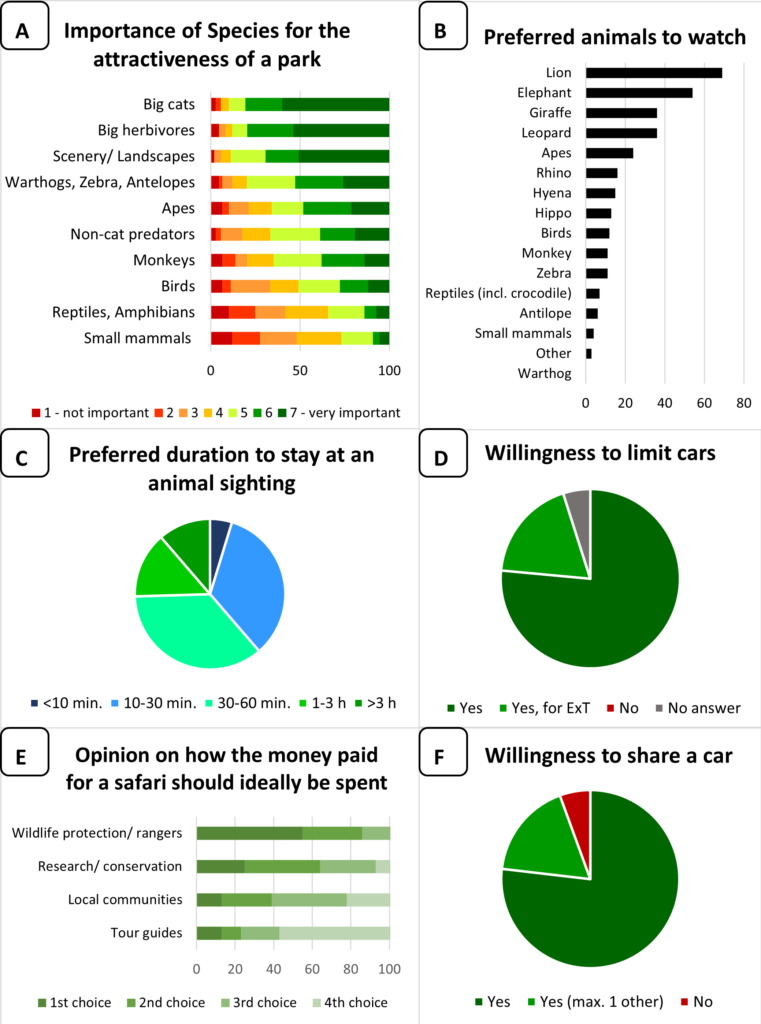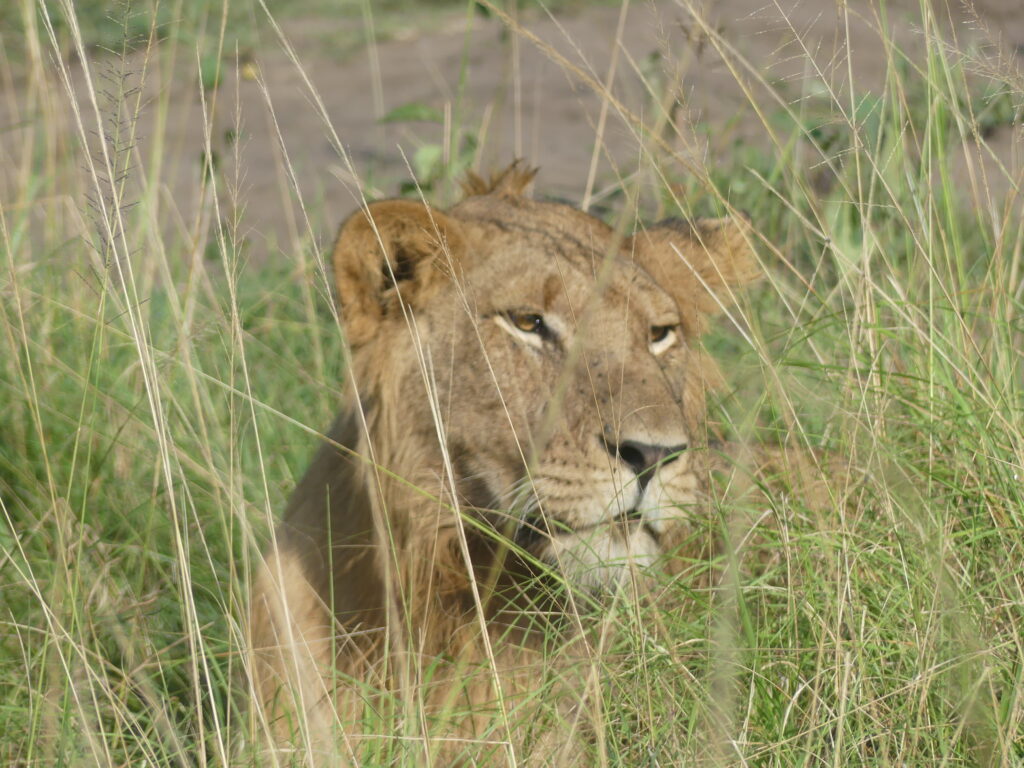
All tested lion behaviours correlated significantly with at least one visitor parameter. “Noise level” was the most influential visitor parameter.
No significant results for leopards were found.
Visitors put a high value on the presence of big cats in national parks, and are willing to take steps to reduce the impact of tourism on animals.
Lions
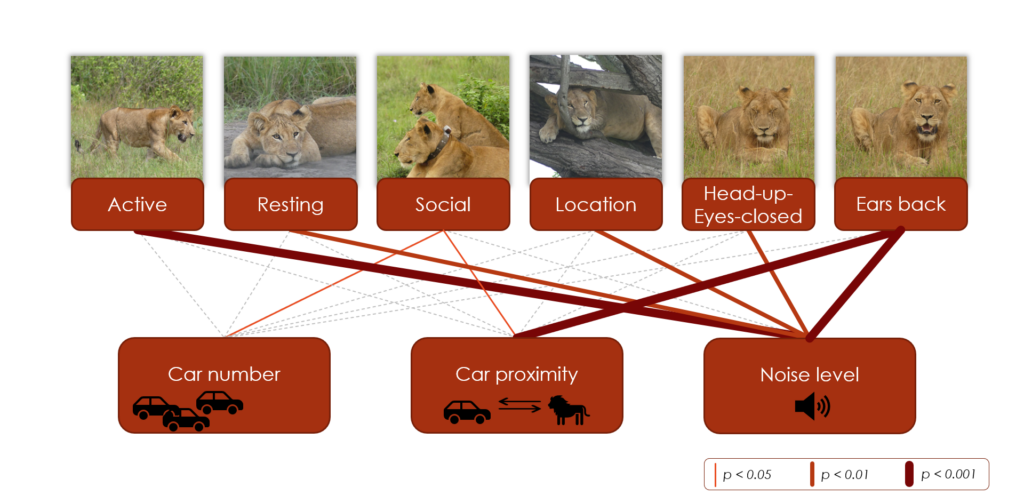
Each of the tested behaviours correlated significantly with at least one visitor-related parameter.
With higher surrounding noise levels, lions were significantly more active, and displayed fewer resting behaviours (Figure 2A/B). They also preferred staying up in trees with lower noise levels (Figure 2C).
Lions tended to stay closer to conspecifics with more cars at a sighting, and with a closer proximity of cars to them (Figure 2D/E).
Higher noise levels also correlate with a higher prevalence of “HUEC” (Lying with the head held up but eyes closed) and “Ears Back” (Lying or sitting with both ears turned back at the same time) behaviours. “Ears Back” was additionally observed more frequently with higher proximity of cars to the lions (Figure 2F/G/H).
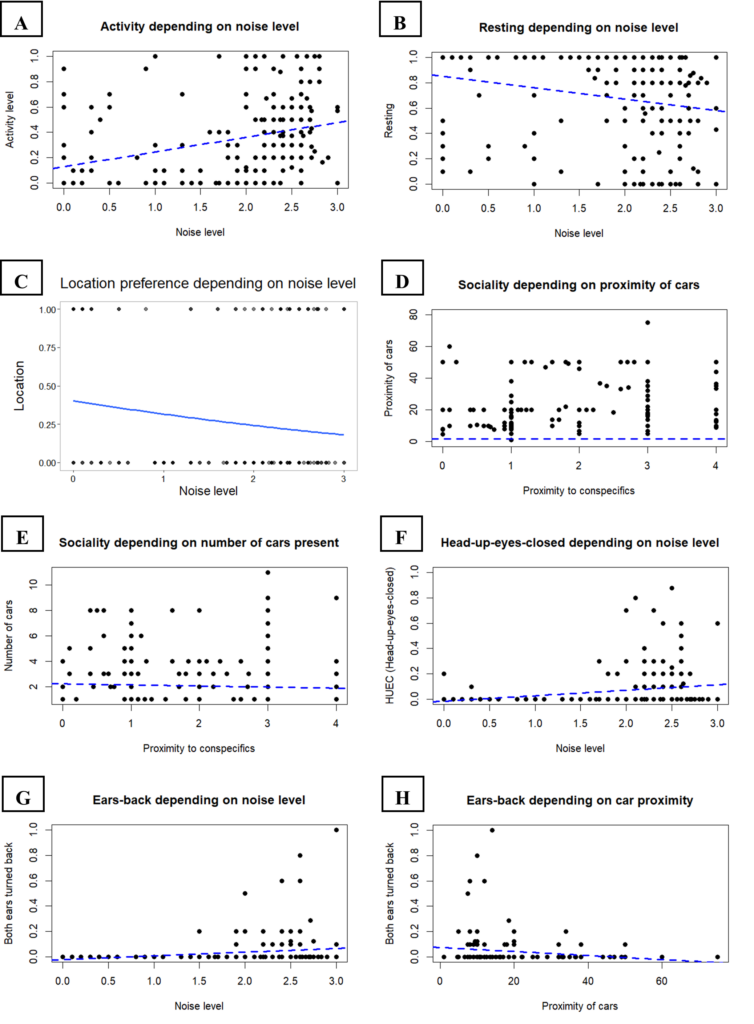
Leopards
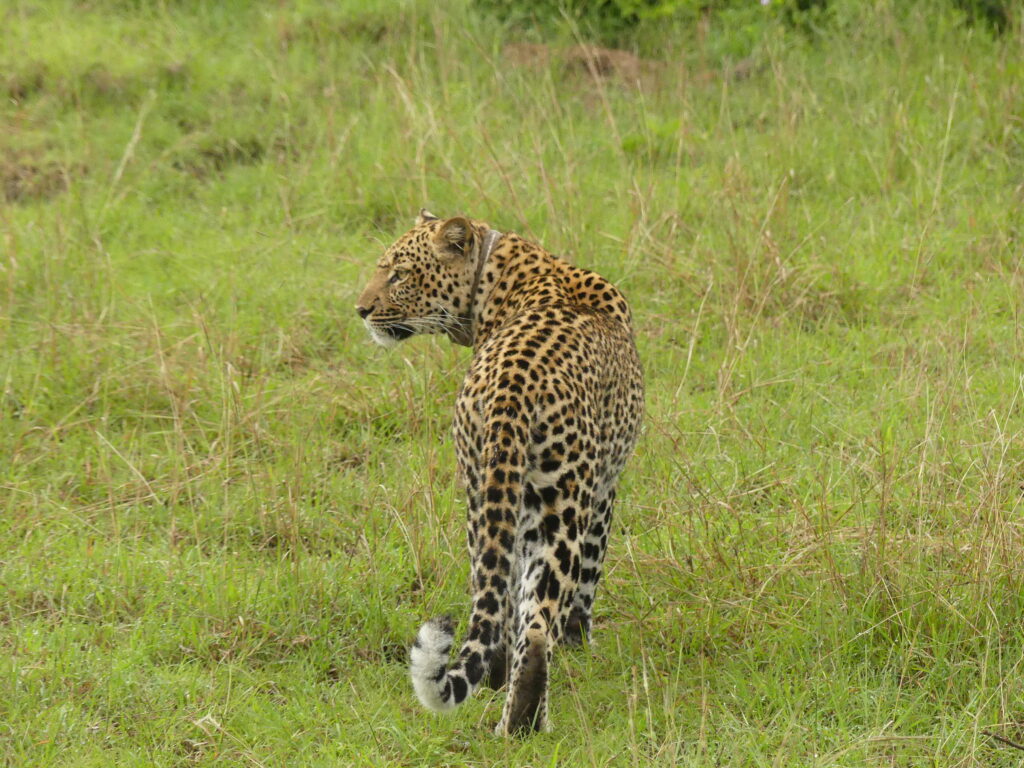
For leopards, all performed statistical tests were the same as for lion data, apart from the “Social” variable, which was not recorded for leopards due to their solitary nature. There were no significant correlations between any leopard behaviours and tourism variables.
Visitor survey

The 108 mostly European survey participants generally attributed a very high value of big cats to the attractiveness of a national park, closely followed by big herbivores like elephants and giraffe (Figure 2A/B). The preferred duration of visitors to stay at an animal sighting is over 10 minutes for the vast majority of participants, and even more than 60 minutes for over 1/4th of them (Figure 2C). A vast majority of study participants are in favour of limiting car numbers around big cat sightings in the park (Figure 2D). Only 6 participants would not be willing to share a car, with the rest of participants willing to share with at least one other person or group (Figure 2F). The division of tourism revenue to the four prompted stakeholders shows that participants put a high value on on-site wildlife protection, followed by research and local communities (Figure 2E).
